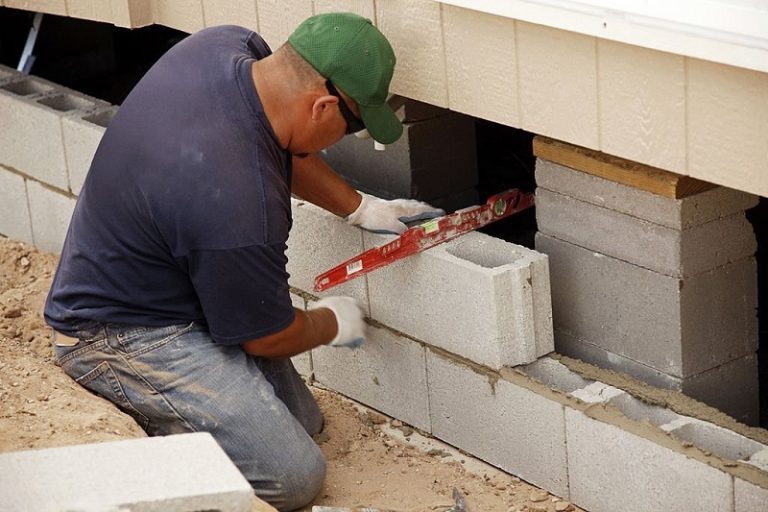Table of Contents
“Normal wear and tear” or “fair wear and tear” are frequent rental terms that refer to the expected depreciation that comes from a renter residing in a rental property, not damage caused by tenant negligence or abuse.
In Rental Property Management?
“Normal wear and tear” is most likely your obligation as a landlord to repair. That might be from repairing tenant-caused damage, although distinguishing between the two can be difficult.
You owe it to your tenants to be fair and just, but you also owe it to your company to hold renters accountable for their conduct.
Related article: How much do real estate agents charge renting?
Continue reading to discover the difference between wear and tear and damage, so you can decide whether to use security deposits and when to cover repair costs yourself.
Understanding the Rights and Responsibilities of Tenants and Landlords in Advertising and Rent Bidding
When it comes to advertising rental properties and rent bidding, both tenants and landlords have specific rights and responsibilities designed to ensure a fair and transparent rental process. Here’s what you need to know:
For Landlords and Agents
- Truthful Advertising: Landlords and their agents must ensure that all advertisements for rental properties are accurate and truthful. Misleading potential tenants with false information can lead to legal repercussions.
- Clear Price Listings: Rental properties should have a clearly listed price. Engaging in practices that obscure the actual rental price is generally discouraged. The intention is to prevent any bait-and-switch tactics.
- Prohibition of Rent Bidding: In many jurisdictions, landlords and agents must not encourage potential tenants to bid against each other for rent. This practice can lead to unfair price hikes, making the market less accessible to many.
For Tenants
- Understanding Asking Rent: Tenants have the right to be informed of the expected rent before committing. If the rent seems negotiable or if there is pressure to offer more, tenants should be cautious and inquire about the standard practices in their area.
- Requesting Transparency: Tenants can ask for transparent information regarding any additional costs or fees that may not be clearly stated in the initial advertising. Knowing all potential expenses upfront is crucial for budgeting purposes.
General Guidelines
- Legal Compliance: Both parties must comply with local and national laws governing rental agreements and advertising practices. Being informed about these regulations ensures that both tenants and landlords are protected.
- Open Communication: Encouraging open and honest communication can prevent misunderstandings and disputes. Tenants should feel empowered to ask questions, while landlords should provide clear and thorough responses.
Periodic property inspections are essential for maintaining high property standards and preserving value. They help identify maintenance issues early, ensure compliance with rental agreements, and prevent minor problems from becoming costly repairs. These inspections promote open communication between tenants and property owners, ensuring a fair and harmonious rental experience for all.
Wear and Tear vs. Other Kinds of Damage
Let’s start with a definition: “wear and tear” is a term of art that varies according to state legislation, but it typically refers to the expected degradation of the house and its fixtures over time as a result of normal and expected use.
Certain portions of any rental property are anticipated to deteriorate in condition as a result of normal, everyday use. For example, merely walking on tile floors every day might cause dulling and mild discoloration.
This unavoidable physical deterioration happens during a tenant’s occupancy; the longer a renter occupies the unit, the more wear and tear may be expected.
Unexpected rental property damage, on the other hand, reduces the value, utility, or regular operation of the rental property and is the consequence of abuse and neglect rather than normal usage.
Normal, ordinary use would not result in cracked or missing tiles. This form of damage does not develop naturally or biologically; it might have occurred on purpose, by accident, or by neglect.

What is “Wear and Tear”?
Numerous components of a rented home will certainly decay. Normal degradation will occur as your renter goes around the rental property, opens and closes doors, and utilizes fixtures or appliances on a regular basis.
It is expected that a rental property will show “fair wear and tear” over time. Renters in Australia are not obligated to pay for normal wear and tear on a rental property. Only when the renter is reckless, negligent, or willfully causes damage to the property, will they be obligated to pay for repairs.
At the end of a tenancy, tenants must leave the property in as close to its original condition as possible. This means taking responsibility for organizing and financing any necessary repairs for damage they or their guests have caused.
Tenants are not responsible for ‘fair wear and tear,’ which refers to natural property deterioration over time. Understanding this distinction helps avoid unnecessary disputes and costs.
The term “fair” refers to damage caused by normal use, like minor scuffs or marks. Damage from misuse or beyond typical living activities isn’t considered fair.
For a smooth rental experience, both tenants and landlords should ensure thorough condition reports are signed before the lease, with tenants adding their remarks within three business days to avoid disputes.
By combining meticulous documentation with the security of insurance, landlords can effectively protect their investments and ensure a smoother tenancy experience.
Completing a condition report is essential for protecting all parties involved. It ensures a fair record of the property’s state, helps distinguish fair wear and tear from damage, and provides visual evidence for clarity. Tenants can add observations, promoting transparency and avoiding bond disputes.
Landlords should also consider comprehensive Landlords’ Insurance to protect against major or malicious damage that exceeds normal wear and tear, providing peace of mind.

Understanding the term “fair wear and tear”
“Fair wear and tear’ refers to the normal degradation of property caused by regular usage. such as regular wear; for example, carpet in a hallway will (usually) be more worn than carpet in less utilized portions of the house.
Although each state’s tenancy rules differ, the real estate market generally accepts this concept of “reasonable wear and tear.”
Legislation Influencing Fair Wear and Tear vs. Property Damage in Rentals
Several legislative sections guide the interpretation of fair wear and tear compared to actual damage in rental properties. These include:
- Tenant Premises Use: Refer to Section 51 of the Residential Tenancies Act 2010, which outlines how tenants are expected to utilize the rented premises responsibly, impacting maintenance expectations.
- Tenant Liability: Under Section 54, the Residential Tenancies Act 2010 specifies the tenant’s responsibility for any damages caused by their own actions, as well as those of their guests. This is vital for distinguishing between fair wear and tear and avoidable damage.
- Limits on Tenant Liability: Section 54A introduces limitations on a tenant’s liability concerning damage incidents related to domestic violence offences, refining the scope of tenant accountability.
- Rental Bond Claims: Section 166 of the same Act delineates conditions under which claims can be made against a rental bond. This section is crucial as it provides insight into what constitutes actionable damage versus standard wear.
Understanding these sections can help both landlords and tenants navigate the complexities of rental property maintenance and liabilities.
Fair Wear and Tear Examples
Carpet degradation in heavy usage areas is to be expected. Large motor oil stains in the bedroom, on the other hand, would be difficult to justify as the result of fair usage.
Examples of Fair Wear and Tear:
- Faded curtains or frayed cables
- Slight scuff marks
- Sun fading and minor spots
- Scuffed wooden flooring
- Faded, chipped, or cracked paint
- Worn kitchen benchtops
- Loose door knobs or hinges
- Cracks in walls from movement
- Watermarks from roof leaks or faulty plumbing
- Paint wear around light switches

What Constitutes Unexpected Damage?
Unexpected damage is the preventable injury or loss of property that exceeds normal wear and tear; this sort of damage might be unintentional, intentional on the part of your renter, or the consequence of negligence.
These sorts of damages are not necessarily the fault of the renter. Landlord neglect might result in significant harm. Damage caused by landlord carelessness may include (but is not limited to):
- Repairs of structural elements such as damaged roofs or ceilings
- Repairs necessitated by defective or insufficient design
- Pipe and plumbing damage caused by neglect
As a landlord, you must guarantee that your property is “habitable” for your renter. This implies that your rental unit must be habitable, free of dangers or faults, and in accordance with state and local construction and health standards.
Additionally, it’s your responsibility to ensure that the property meets minimum standards not only at the start of the tenancy but throughout its duration. This means regular maintenance and timely repairs to uphold those standards.
Landlords are expected to address repair requests from tenants promptly, ensuring any issues that arise are resolved efficiently. By maintaining open communication and being responsive, you ensure your property remains a safe and comfortable home for your tenants.
Remember, meeting these obligations is not just about compliance—it’s about fostering a positive and professional relationship with your renters
When may landlords take money out of security deposits?
If the degradation of your property exceeds “normal wear and tear,” you may be able to withdraw funds from your tenant’s security deposit.
What Are the Responsibilities of a Renter at the End of a Tenancy?
When a tenancy comes to an end, renters have a critical responsibility to ensure the rental property is in an optimal state. Here’s what you need to focus on:
- Restoration of Condition: It is crucial for renters to leave the property, including any furnishings or fixtures, in nearly the same state as when they moved in. This means addressing any wear and tear beyond normal use.
- Cleaning and Repairs: Ensure the property is thoroughly cleaned. This includes areas like kitchens, bathrooms, and floors. Any damage beyond typical wear should be repaired before departure.
- Personal Items Removal: All personal belongings should be removed from the premises. Double-check that you’ve left nothing behind in closets, cabinets, and storage areas.
- Utilities and Garbage: Settle any outstanding utility bills. Also, ensure garbage and recycling are properly disposed of, leaving no waste behind.
- Final Walkthrough: Before handing back the keys, conduct a final walkthrough to address any overlooked issues and confirm the property meets the expected standards.
By adhering to these guidelines, renters can expect a smoother handover process and a better chance of receiving their full security deposit.
Related article: How to politely ask for your security deposit back?
This is where many tenant-landlord problems arise. Numerous incidents of litigation between landlords and renters have occurred, questioning the notion of “beyond normal wear and tear.” The extent to which you may recover from your renter for property damage is determined by local legislation.





